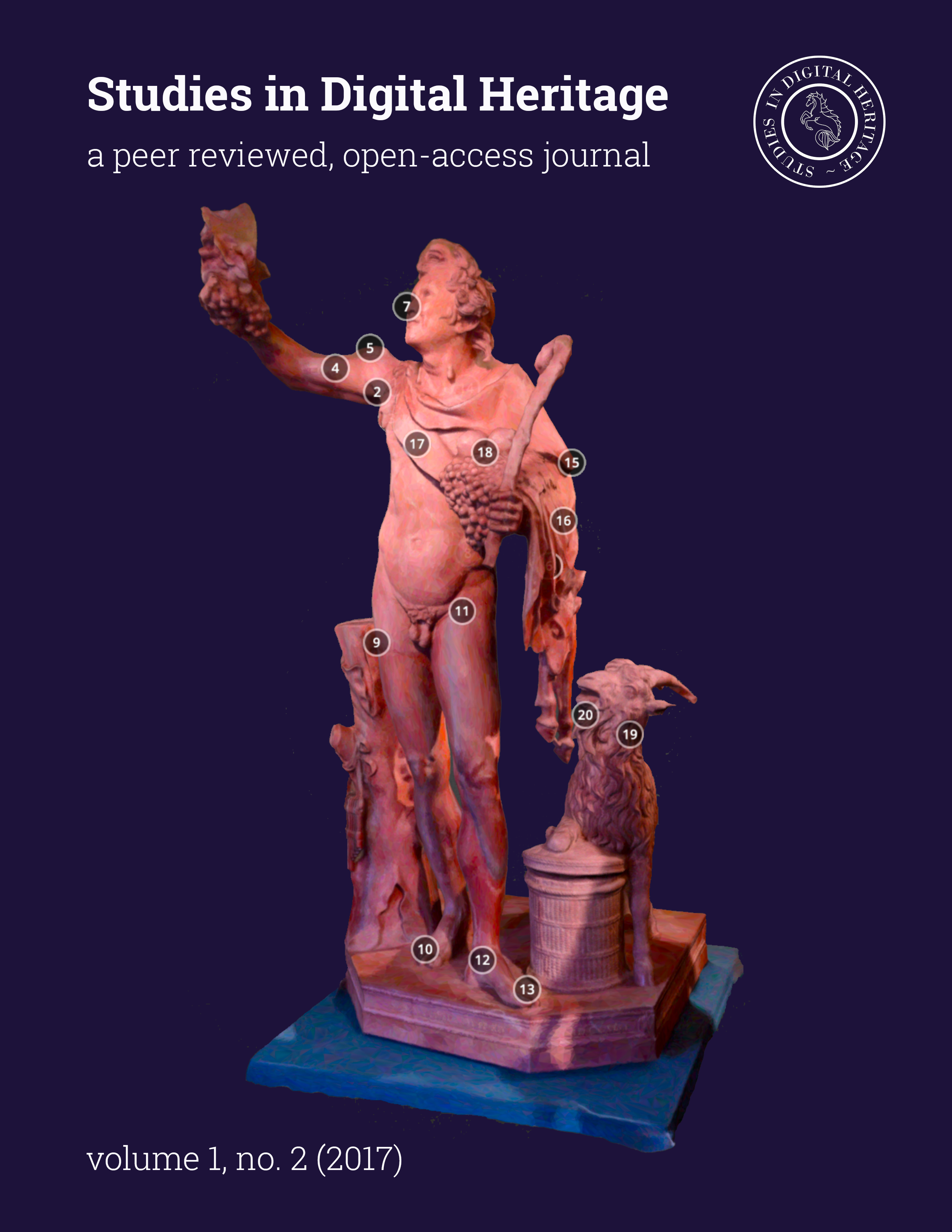3D Reconstruction of Furniture Fragments from the Ancient Town of Karanis
Main Article Content
Abstract
Furniture is the most personalized component of architectural space. It reflects or even determines the use of space, but also the standard of living, the gender, and age of the user. Heirlooms, furthermore, are retainers of memory and social relationships. The raw materials used and the level of skill and craftsmanship to produce furniture speak to the availability of such items for the community. Import of wood, techniques, or entire pieces of furniture show connectedness with other production centers. Furniture fragments are abundant among the well-preserved archaeological finds from the ancient Greco-Roman Town of Karanis, a site located on the arid desert edge of the Fayum basin, Egypt. Objects include furniture legs, boxes, reading tables, and table tops. The University of Michigan mission which worked on the site for about ten years (1924-1934), had as its main focus the architecture of Karanis. The furnishings of these structure do, however, provide important information and a study of the woodworking and composition of the pieces has now been undertaken, together with an attempt to place these remains back in their virtual context. The reconstruction of the Karanis furniture provides a major challenge because the fragments belong to various time periods and combine Egyptian, Greek, and Roman influences and tastes. This research is a next phase of the project “Reviving Karanis in 3D”, which we started in 2013. In this research, we aim at using state-of-the-art digital technologies to create multiple interpretations of 3D reconstruction of a selection of furniture pieces based on analysis and photogrammetric models of wood furniture fragments from the Karanis collection of the Kelsey Museum of Archaeology, University of Michigan.
Downloads
Article Details
From 18 May 2018, the contents of Studies in Digital Heritage are licensed under a Creative Commons Attribution-NonCommercial 4.0 International License (CC BY-NC 4.0). Our submitting authors pay no fee and retain the copyright to their own work.
How this works: to submit their work to the journal, authors grant Studies in Digital Heritage a nonexclusive license to distribute the work according to a CC BY-NC 4.0 license. Once an article is published, anyone is free to share and adapt its contents—provided only that they do so for noncommercial purposes and properly attribute the shared or adapted information. Details of these terms can be found on the Creative Commons website.
Download SDH’s full author agreement here
Studies in Digital Heritage will insert the following note at the end of any work published in the journal:
© [Year] by the authors. This article is an open-access article distributed under the terms and conditions of the Creative Commons Attribution License CC BY-NC 4.0 (https://creativecommons.org/licenses/by-nc/4.0/).
References
Hans Barnard et al. 2016. The Preservation of Exposed Mudbrick Architecture in Karanis (Kom Aushim), Egypt. Journal of Field Archaeology. 40, 3 (2016), 84-100.
Alexander Croom. 2007. Roman Furniture. Stroud: Tempus Publishing.
Eiman Elgewely and Willeke Wendrich. 2015a. Reviving Karanis in 4D: Reconstruction of Space through Time. In Cultural Heritage and New Technologies 20. Vienna, Nov. 2-4, 2015.
Eiman Elgewely and Willeke Wendrich. 2015b. Virtually United in Real Time: Museum Collections and Archaeological Context Explored. In Digital Heritage Congress. Granada: IEEE.
Helena Hayward. 1981. World Furniture. London: Hamlyn.
Elinor Husselman. 1957. Donationes Mortis Causa from Tebtunis. Trans. Proc. Am. Philol. Assoc. 88 (1957), 135–154.
Elinor Husselman. 1979. Karanis Excavations of the University of Michigan in Egypt, 1928-1935. Topography and Architecture: A Summary of the Reports of the Director, Enoch E. Peterson. Ann Arbor: University of Michigan Press.
Geoffrey Killen. 1979. Ancient Egyptian Furniture I. Aris & Phillipps.
Geoffrey Killen. 1994. Ancient Egyptian Furniture II. Aris & Phillipps.
Stephan Mols. 2008. Ancient Roman Household Furniture and Its Use : From Herculaneum To the Rhine. AnMurcia 23–24, May 2009 (2008), 145–160.
Stephan Mols. 1999. Wooden Furniture in Herculaneum: Form, Technique and Function. Amsterdam: Gieben.
Gisela Richter. 1966. The Furniture of the Greeks, Etruscans, and Romans. London: Phaidon.
Nora Scot. 1965. Our Egyptian Furniture. Metropolitan Museum of Art Bulletin, n. s. 24 (1965).
Roger Ulrich. 2007. Roman Woodworking.New Haven: Yale University Press.
Willeke Wendrich. 1999. The World According to Basketry; an Ethnoarchaeological Interpretation of Basketry Production in Egypt, Leiden: Research School for Asian, African and Amerindian Studies (CNWS).
Terry Wilfong. 2004. Karanis, An Egyptian Town in Roman Times: Discoveries of the University of Michigan Expedition (1924-1935). Elaine Gazda, ed., Kelsey Museum Publications.


